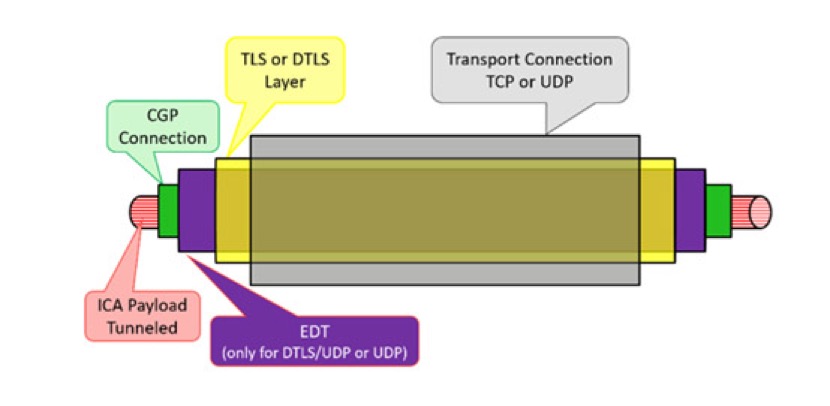100% Pass Cisco, PMP, CISA, CISM, AWS Dumps on SALE!
Get Now
01:59:56
X
Why use "virtual" concept for computer communication?
Where are the TCP connection-oriented features?
Recently, I was reading the article about TCP connection. I have a doubt. I hope you can help. Where is the connection-oriented feature of TCP? Because the three-way handshake of TCP seems to the router to forward three ordinary packets, the router will not reserve bandwidth resources for this session. Where is the "connection" feature of TCP?
What attracted me to this question is that “the three-way handshake of TCP appears to the router as if it is forwarding three ordinary packets, and the router will not reserve bandwidth resources for this session” There is also a thin layer of window paper facing the connection.
Tunnels are often mentioned in my articles. Tunnels are often encountered in life, and the term tunnel is often used in computer communications.
Has anyone seen a tunnel on a computer or network device?
No one must have seen it! The tunnel in the communication world is a virtual expression, a logical concept! As long as you understand that a tunnel usually has two ends, it is divided into a head end and a tail end.
The head end throws the organized data into the truck traveling in the tunnel according to the data format agreed in advance with the tail end. The truck drives to the tail end of the tunnel and stops to unload. The tail end extracts the data according to the format of the data and waits for further processing. The above expression is actually to help understanding, TCP connection is also a virtual logical concept! You can think of TCP as a tunnel or virtual connection!
In order to establish an end-to-end tunnel, TCP usually needs three handshake! After three successful handshake, there is a virtual connection (tunnel)! The three-way handshake is not meaningless. It is to open up a small memory at both ends of the communication in advance for
o TCP Connection ID
o Save current connection status
o The receiving window size of the other party
o Backup of messages sent but not yet confirmed
o Send buffer
o Receive data buffer, etc.
Only when the two parties exchange three handshake can the above memory initialization be completed. Then receive data from the application layer and put it into the send buffer. At the same time, receive the message from the underlying network, and calculate the TCP Connection ID based on the quadruple, retrieve the starting address of this small memory based on the "Connection ID", and find the "receive buffer" space according to the memory address, and then put Put the data into the "free receive buffer" and wait for the application layer to take it away using the Recv () interface function!
Students who have just started to learn TCP will find it harder to learn these as soon as they come up, because this is very abstract!
Therefore, in order to make this learning process easier, the name TCP connection (large pipe) is used, as if there is really a large pipe that transports byte data between the client and the server, and two thin pipes are nested inside this large pipe tube. One is for the client to write (send) data, the server reads (receives) the data at the other end of the tube; the other is for the server to write (send) data, and the client reads (receives) the data. This expression is very friendly to beginners! Did not find a suitable picture, similar to the tube below.

But the reality is that without these colorful tubes, the data sent by the client takes one IP message after another as a transmission unit, competing with the Internet's hundreds of millions of IP messages to compete for limited network bandwidth resources. Limited router hardware and software resources, this is the essence of the Internet, shared network! There is a risk that IP messages will be repeated at any time. Where is a dedicated connection (physical pipe) for your own use!
If the IP packet is lucky, it will eventually reach the end and be processed by the TCP module. TCP does treat it as a connection. First, we need to find out which connection (Connection ID) is based on the quaternion, and then extract the information from the memory space corresponding to the connection (Connection ID) for further processing. These operations have already been mentioned above, and will not be repeated.
The above is the news sharing from the PASSHOT. I hope it can be inspired you. If you think today' s content is not too bad, you are welcome to share it with other friends. There are more latest Linux dumps, CCNA 200-301 dumps and CCNP Written dumps waiting for you.
Cisco Dumps Popular Search:
ccna 200-125 dumps free download pdf ine ccie security v5 technologies getvpn ccnp tshoot lab manual configuration files ccna textbook cisco ccna pass for sure cisco 200-301 course outline cisco ccna class ccna exam writers 200-301 reddit ccna certification boot camp denver
Copyright © 2025 PASSHOT All rights reserved.






